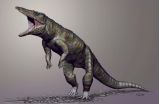(Press-News.org) COLLEGE STATION -- Researchers at Texas A&M AgriLife Research have developed a new technology to determine sensitivity or resistance to rabies virus.
"We were able to create a novel platform such that we could look at how pathogens, such as bacteria or virus or even drugs or radiation, interact with specific human genes," said lead researcher Dr. Deeann Wallis, AgriLife Research assistant professor of biochemistry and biophysics. "It allows us a new way to profile the genes involved in sensitivity or resistance to certain agents."
The rabies work is being reported in the journal Stem Cells.
"Our study is the first to show pre-existing libraries of mutant stem cells can be differentiated into different cell types en mass and screened to identify meaningful genes involved in a cell's response to infection," Wallis said. "Moreover, this technique can be used to identify human genes that are involved in any type bacterial or viral infection, or even response to drugs, toxins or radiation. This is a relatively novel way for researchers to discover gene function and assess human host response."
Understanding sensitivity or resistance to rabies is important, she said, not only because the disease still causes 55,000 deaths a year globally, but it could also potentially be weaponized and used as a biowarfare agent.
Wallis said the five-year study used murine embryonic stem cells from a library of mutant stem cells typically used to generate knockout mice.
A knockout mouse is a laboratory mouse in which researchers have inactivated, or "knocked out," an existing gene by replacing it or disrupting it with an artificial piece of DNA, according to the National Human Genome Research Institute. Such cells and mice are frequently used as a model to study human genes, Wallis noted.
She explained that each stem cell clone has a different gene mutated.The researchers took a panel of a variety of different genes and were able to query each cell line separately.
"For the first time ever, we were able to take thousands of different stem cell lines, each carrying a separate mutation, and differentiate them into neurons," she said. "It was quite a large task to miniaturize this. We were able to show with genes that are known to be involved in rabies virus that if we mutated a gene in the mouse, we still can see differences in sensitivity and resistance to rabies virus in these cells.
Knockout mouse stem cells have only one copy of each gene, whereas a regular cell would have two copies of every gene. Therefore, other researchers thought it was not possible to see an impact of a particular gene because half of it is still there, she said.
The research team grew embryonic stem cells in an array of approximately 100 per plate, differentiating them into fully functional neurons. Then, fluorescent green rabies virus was added and plates were photographed daily for several days. An image analysis program was used to measure how much green was on each picture.
"The results are basically sorted on the high amount of green, meaning these are really sensitive to rabies, and the resistant ones that have very little green," Wallis said. "We were able to identify 63 different host target genes. These genes represent new pathways that can be targeted for treatment of rabies.
"If we are able to target host-based genes with drugs, they would mutate much less rapidly than viral or bacterial genes, and so we would have fewer problems with resistance."
She said researchers are already considering the technique for further studies on tuberculosis, botulism, ebola and even attention deficit hyperactivity disorder.
"There's no end to the possibilities for screening stem cells in this way," Wallis said.
INFORMATION:
The U.S. Department of Defense funded this project.
SAVANNAH, Ga., March 19, 2015 - Bad news for relentless power-seekers the likes of Frank Underwood on House of Cards: Climbing the ladder of social status through aggressive, competitive striving might shorten your life as a result of increased vulnerability to cardiovascular disease. That's according to new research by psychologist Timothy W. Smith and colleagues at the University of Utah. And good news for successful types who are friendlier: Attaining higher social status as the result of prestige and freely given respect may have protective effects, the researchers ...
PORTLAND, Ore. - March 19, 2015 - A new in vitro (test tube) study, "Dietary functional benefits of Bartlett and Starkrimson pears for potential management of hyperglycemia, hypertension and ulcer bacteria Helicobacter pylori while supporting beneficial probiotic bacterial response," was published in the March issue of Food Research International.1
In a laboratory in vitro setting, Kalidas Shetty, PhD, currently a professor of plant science at North Dakota State University, and the research's lead author, Dr. Dipayan Sarkar, studied the compounds found in two pear varieties, ...
Researchers at the Max Delbrück Center for Molecular Medicine (MDC) Berlin-Buch and Charité - Universitätsmedizin Berlin, Campus Berlin-Buch, have succeeded in generating cells of the immune system to specifically target and destroy cancer cells. The research findings of Matthias Obenaus, Professor Thomas Blankenstein (MDC and Charité), Dr. Matthias Leisegang (MDC) and Professor Wolfgang Uckert (Humboldt-Universität zu Berlin and MDC) as well as Professor Dolores Schendel (Medigene AG, Planegg/Martinsried) have now been published in Nature Biotechnology ...
Sensing pain is extremely unpleasant and sometimes hard to bear - and pain can even become chronic. The perception of pain varies a lot depending on the context in which it is experienced. 50 years ago, neurobiologist Patrick Wall and psychologist Ronald Melzack formulated the so-called "Gate Control Theory" of pain. The two researchers proposed that inhibitory nerve cells in the spinal cord determine whether a pain impulse coming from the periphery, such as the foot, is relayed to the brain or not. A team headed by Hanns Ulrich Zeilhofer from the Institute of Pharmacology ...
The kidney carries out vital functions by continuously filtering the blood and excreting waste products into the urine. This is achieved by a complex system of tubules which transports the urine and regulates its composition. PhD student Annekatrin Aue, Dr. Christian Hinze and Professor Kai Schmidt-Ott of the Max Delbrück Center for Molecular Medicine (MDC) have now discovered how parts of these kidney tubules establish an inner space (lumen) and form a tight barrier against adjacent structures. The epithelial cells which line the tubules coordinate these processes ...
What does hair styling have in common with quantum computing? The braiding pattern has inspired scientists as a potential new approach to quantum calculation. The idea is to rely on a network of intersecting chains, or nanowires, containing two-dimensional quasi-particles. The way these quasi-particles evolve in space time produces a braid-like pattern. These braids could then be used as the logic gate that provides the logical function required for calculations in computers. Due to their tight assembly, such braids are much more difficult to destabilise and less error-prone. ...
A newly discovered crocodilian ancestor may have filled one of North America's top predator roles before dinosaurs arrived on the continent. Carnufex carolinensis, or the "Carolina Butcher," was a 9-foot long, land-dwelling crocodylomorph that walked on its hind legs and likely preyed upon smaller inhabitants of North Carolina ecosystems such as armored reptiles and early mammal relatives.
Paleontologists from North Carolina State University and the North Carolina Museum of Natural Sciences recovered parts of Carnufex's skull, spine and upper forelimb from the Pekin ...
"Despite all the talk about globalisation and the trend towards the expansion of the international trade space, the world is still far from frictionless or flat. There are still large national differences between countries. And these differences can greatly influence the companies' earning potential when they seek to expand."
So says Associate Professor Ingo Kleindienst from the School of Business and Social Sciences at Aarhus University. He has recently concluded a major study of 91 German-owned multinational companies and their ability to make money in foreign markets. ...
This news release is available in French. A research group at the Department of Nutritional Sciences at the University of Toronto, Faculty of Medicine has been using a rat model to see how maternal intake of above-requirement vitamins (A, D, E, and K) impact offspring's brain development and behaviour. Some of their findings were published today in the journal Applied Physiology, Nutrition, and Metabolism.
Much research on vitamins focuses on prevention of deficiencies and the toxicity of very high intakes. However, little has been done on the effect of intakes above ...
Scientists at The University of Manchester have created an enhanced surface for silicone breast implants which could reduce complications and make them less likely to be rejected by the body.
In the US alone almost 400,000 cosmetic breast augmentations and reconstructions are carried out each year, and the number is growing. Some of these cases are for reconstruction after surgery for breast cancer and can have important psychological benefits.
However, around one in five people who has a breast implant suffers from capsular contracture where scar tissue forms and ...

